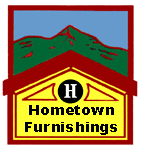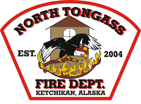 By MARY DEIBEL Scripps Howard News Service November 14, 2005
Replacement windows and doors, new energy-efficient furnaces and other appliances, and whole-house insulation may make sense as part of a major remodeling, but you'll spend thousands of dollars that may take more than 15 years to recoup - longer than most people stay put in a house. Local utilities offer a range of rebates for weatherproofing your house along with online energy audits to pinpoint potential money-wasters, and hardware, home-improvement and appliance stores are staging seasonal sales and clinics on winterizing.
But new federal energy tax credits for up to $500 - $200 for new windows - don't kick in until Jan. 1, 2006. Tax expert Bernie Kent of PriceWaterhouseCoopers suggests holding off on big-ticket winter-proofing expenses until then absent free-money rebates. Meantime, experts say a few simple steps are likely to provide the biggest return on your money, whether you're a homeowner or a renter. 10 FREE ENERGY SAVERS: 1. Open blinds and curtains during daylight to let in sun. Close them at night. 2. Dust light bulbs. Dust can cut light output 25 percent. 3. Rearrange furniture away from windows so you don't feel drafts. 4. Keep the fireplace damper closed unless a fire is going. An open damper is like having a 48-inch window open 24 hours a day. 5. Don't run the dishwasher, washing machine or dryer unless they're full. 6. Use the microwave instead of the stove to cook; it uses 40 percent of the energy. 7. Turn off lights, TVs, CDs and other electronics when not in use, and power down computer equipment. 8. Cut your water-heater temperature from 140 degrees to 120 degrees. 9. Take showers, not baths. 10. Reverse ceiling fans so hot air that rises will be forced back to floor level. PENNYWISE SAVINGS: 1. Weather-strip doors and windows that don't seal tightly, and put foam gaskets under electrical outlet plates to reduce drafts. Smoke from a lighted candle or incense stick will blow horizontal if there's a leak, the Department of Energy suggests. The flame-averse can look for wafts by walking by windows and doors with a facial tissue pinned loosely to a coat hanger. 2. Plug holes in the attic around electric and plumbing chases and ductwork. Wear goggles, mask, gloves and whatever other safety gear the insulation maker advises. 3. Make sure ducts are connected and sealed to deliver heat. Use mastic or metal-backed tape to seal ducts, not duct tape, which doesn't perform well at high temperatures. 4. If window air conditioners cannot be removed, use rope caulking and an insulation blanket to ensure they're tightly sealed. 5. Install a programmable thermostat to lower the temperature when you're asleep or away. It's less than $100 - what it saves on heating bills the first year. 6. Get an annual checkup for your furnace or heat pump. Replace dirty filters with clean ones in forced-air systems. 7. Replace incandescent light bulbs with compact fluorescent bulbs that use 25 percent the electricity and last 10 times longer. 8. Get an insulating blanket for the hot-water heater for $15 or less at your hardware or home-improvement store. 9. Buy power strips for $10 apiece that can be cut off at night for your electronics. 10. Buy light timers for $10 or less so you don't come home to a dark house in wintertime for security and energy-savings.
Sources:
Publish A Letter on SitNews Read Letters/Opinions Submit A Letter to the Editor
|
||


